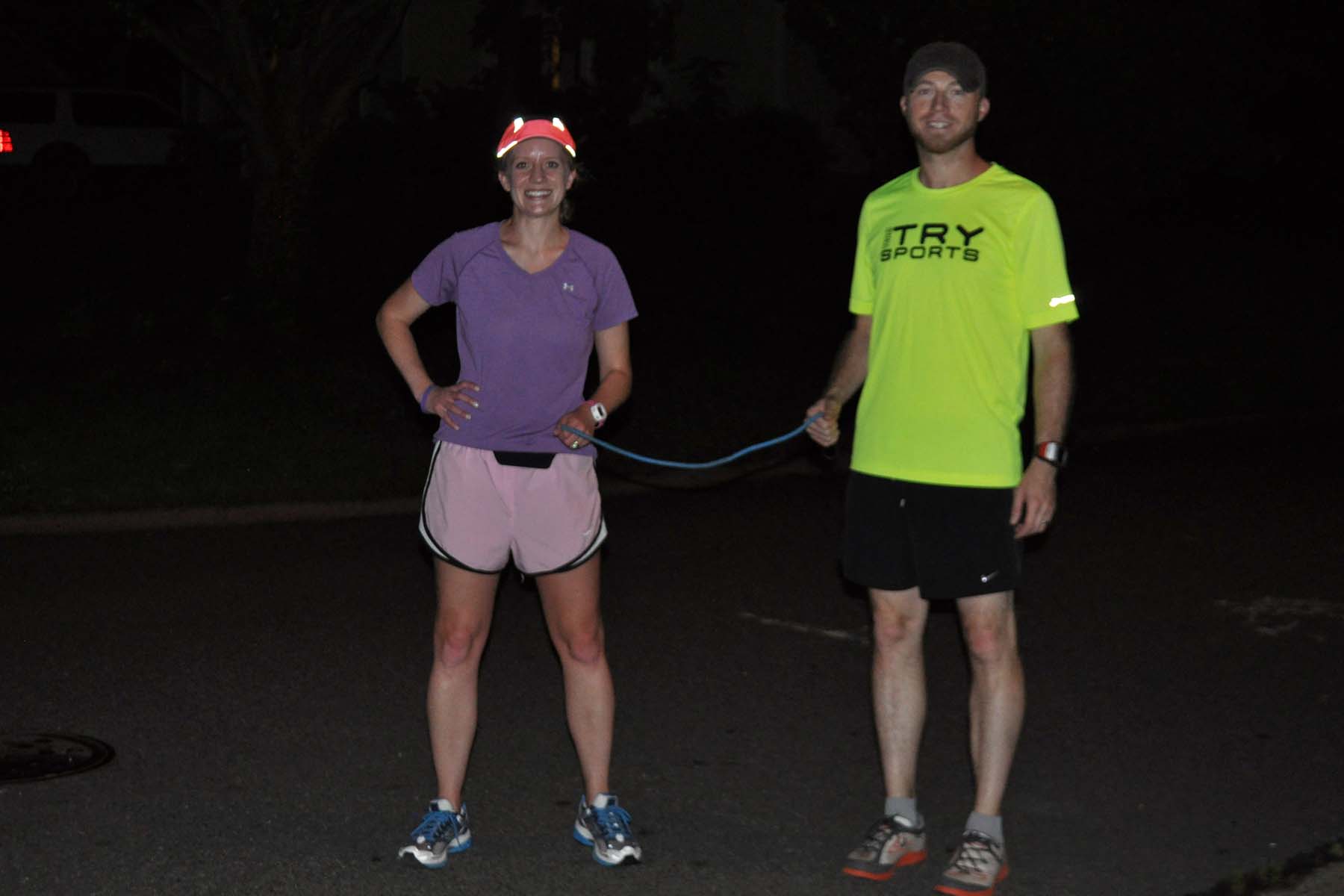Two nights ago, I ate an early dinner and waited for several hours to give my grilled cheese, my apple and my neighbors a chance to wind down. Then, I donned a reflective hat, strapped on my Garmin watch and laced up my running shoes. With a bungee cord in hand, I jogged .7 miles under inky, starless skies to the home of my friend, Andrew Swistak, a fellow runner who works at The Fletcher School, where my sister, Taylor, spent six wonderful years.
Just after sunrise on the morning of Nov. 16, I will pull on a blindfold after I lace up my shoes, and Andrew will guide me through the 13.1-mile Thunder Road Half Marathon course on the streets of my hometown of Charlotte. I will attempt to run the entire race without the gift of sight to honor the five-year anniversary of Taylor’s first 5K race, which she ran in conjunction with the 2008 edition of Thunder Road with the help of an older student from Fletcher.
But on this night – National Running Day and my first training run with Andrew – I had no blindfold and, with corrective lenses, perfect vision. Our goal for the evening was to get accustomed to running with the bungee cord.
Early on in our run, though, Andrew took me to the track at the middle school by our neighborhood so we could get used to making turns. And in that protected environment, he asked me if I wanted to give blindness a try, at least for a minute. So I closed my eyes.
Right away, I lost my spatial awareness. The bottom dropped out from under me. My legs turned to Jell-O, and my body felt as though it was not my own. I couldn’t run in a straight line.
But soon, with Andrew’s help, I found my bearings in my dark world. I think we ran five laps around the track. Andrew said that for the most part, I stayed in my lane, even on the turns. I learned to understand the meaning of his tugs on the bungee cord. After a while, we left the track and returned to the neighborhood. I figured out how to make 90-degree turns and 180-degree turns and shift to the side for an oncoming car. At one point, Andrew asked me if my eyes were really closed. And they were.
I thought I’d mastered running blind – albeit much more slowly than I run sighted – until I mistimed a curb jump and twisted my ankle. And in that moment, I remembered that NOTHING about blindness is easy, just as nothing about this race will be easy.
But nothing about Batten disease or rare diseases is easy, and nothing about our fight to save people like Taylor is easy. And a twisted ankle on my first attempt isn’t enough to stop me. An ACE bandage, an ice pack and a couple of days’ rest work wonders for such injuries. And besides, going to work with an ice pack taped to my ankle gave me a natural opening to tell plenty of people about my blindfolded run and the reason behind it, so we spread Taylor’s Tale this week.
And I have a great guide in Andrew Swistak, not to mention a healthy dose of inspiration. There will be no twisted ankles on Nov. 16. We’ll be ready.
I am running the Thunder Road Half Marathon to support gene therapy co-funded by Taylor’s Tale at the University of North Carolina Gene Therapy Center. Donations to this cause are 100 percent tax-deductible. To support my run and our fight to develop treatments for Batten disease and other genetic diseases, click here.

